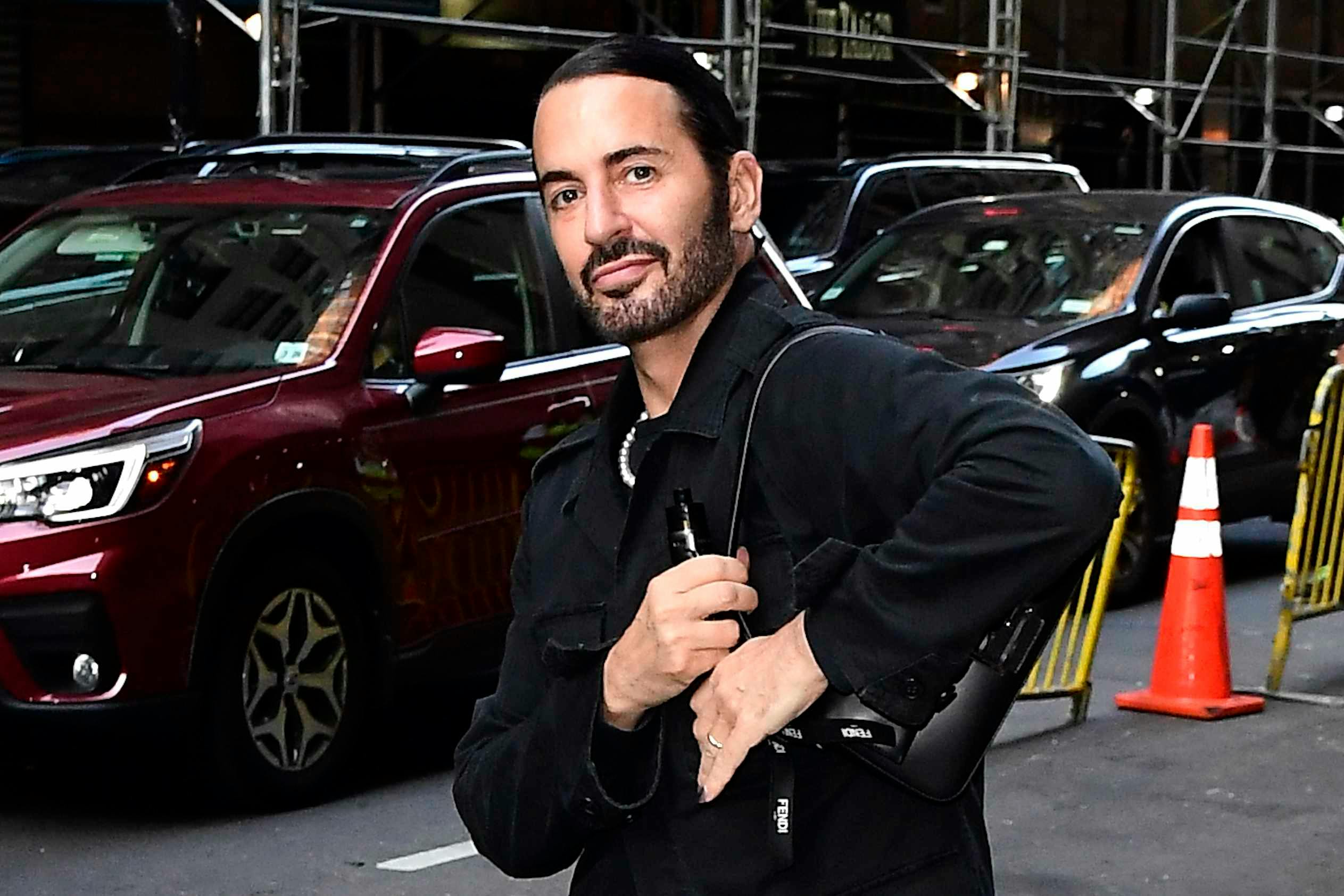
Marc Jacobs was only the first of Louis Vuitton's many marketable creative leads — his successors, Kim Jones, Virgil Abloh, and Pharrell are equally saleable titans — but he remains the king, the original, the blueprint. No one out Marc-ets the Jacobs.
But I don't merely mean that Jacobs, who left LV in 2013 to focus on his eponymous brand, solely makes moolah.
I mean, he does, clearly, but Jacobs is more. He's incredibly adept at straddling the worlds of commercial and conceptual fashion, balancing fashion's impossible tightrope. He's a designers' designer but also everyone's designer.
Even putting massively popular sub-label Heaven aside, the name Marc Jacobs is itself indicative of a cultural and critical juggernaut.
Jacobs' runway shows are one of the rare fashion spectacles that also satisfy a broader audience, sort of like those immersive Van Gogh exhibits. That's not a diss: his fashion shows blow up the authentic artistry behind Jacobs' mass appeal to XXXL scale, tangible manifesting his inarguable brilliance.
No wonder they're a hit with both insiders and casual admirers alike.
And then Jacobs' bags, so ubiquitous that feels alien to say "tote bag" without a "Marc Jacobs" prefix, are such unequivocal best-sellers that I don't even need to justify that assertation with numbers (OK, the bags are part of Jacobs' bigger plan to bring in $1 billion annually).
Even Jacobs' towering Kiki boots, a hollering statement shoe that's also casually aspirational to the fashion layperson, are a worthy mission statement made tangible..
Like Rei Kawakubo and Rick Owens, two of his own favorite designers, Jacobs' path is forged between between the realms of reality and fantasy.
In fact, I'd argue that perhaps more capably than most of his peers, Jacobs has perfected the art of packaging fantasy. Not only that, but he sells it to the olds, the youngs, and everyone in between.
It wasn't always this way.
After sliding down from his peak at Louis Vuitton, Jacobs' solo career carried on swimmingly for a while. But, eventually, the magic faded and the diffusion lines, while profitable, wound up so diluted that they gave way to self-parody.
By the late 2010s, Jacobs' career had dipped, as documented via in media res profiles.
But he clawed his way back fashion-first, literally. It was Jacobs' reborn and suddenly vital runway shows that kicked open the door to his current domination.
Jacobs' Fall/Winter 2021 presentation plastered big logos atop big clothes resplendent in their big colors, signaling the start of Jacobs' current-era commercial hot streak as critics hailed his return to form in a deservingly Wayne's World-ian sort of way.
Presented over a year after Jacobs' previous fashion show, FW21 wasn't only fun — it was essential, a visual metaphor for his native New York City blossoming back to life after a slumber wrought by quarantine.
Jacobs' catwalk shows since then have uniformly become the big off-calendar event of the season, each one huger than the last. Spring/Summer 2024's theatrical doll fashion was sublime, arguably one of Jacobs' career high points.
If Jacobs' metaphorical sails were lifted by industry support, actual sales were what gusted the wind that then propelled him into a new age.
Around the time that Jacobs' fashion comeback began, so too did his financial wins.
The Marc Jacobs Tote Bag, a square shoulder bag with top handles and life-larger logos, is actually about five years old but it became one of the decade's Great Handbags in the '20s.
It's approachably priced for a designer handbag, impressively utilitarian, and bears Jacobs' beautifully bold branding — little wonder it's been the subject of literally thousands of TikTok videos.
This is the Marc Miracle, the ability to both consistently notch industry admiration even while unabashedly owning fashion's commercial side.
Despite this being a money-crazed business, dollars and cents do not polite conversation make. It's longstanding and unspoken tradition to understate moneymakers, throwing the spotlight instead on the art of it all.
That's why, seeking to lure price-conscious consumers without cheapening their top-tier mainline labels, luxury labels saturated the marketplace with mid-tier diffusion imprints.
The low-priced sub-label may have gone the way of the dodo but the glut of designer sneakers, $600 T-shirts, and celeb-powered scents represents the same desire among the powers that be to have their Erewhon smoothies and drink it, too.
And you still so rarely see designers of Jacobs' caliber freely embrace their best-sellers, metaphorically or (especially) literally.
But, there, in Jacobs' 40th anniversary campaign — held by the man himself! — sits that inimitable Marc Jacobs Tote Bag.
It don't get more direct than that.
And why not? Because Jacobs knows that you can do it all and still have cred to spare. Because he fully comprehends the power of social media stunts (and pulls them off with remarkable consistency).
Because he knows that a fashion company must sell product as capably as it sells fantasy.
Because Jacobs is the master of Marc-eting.